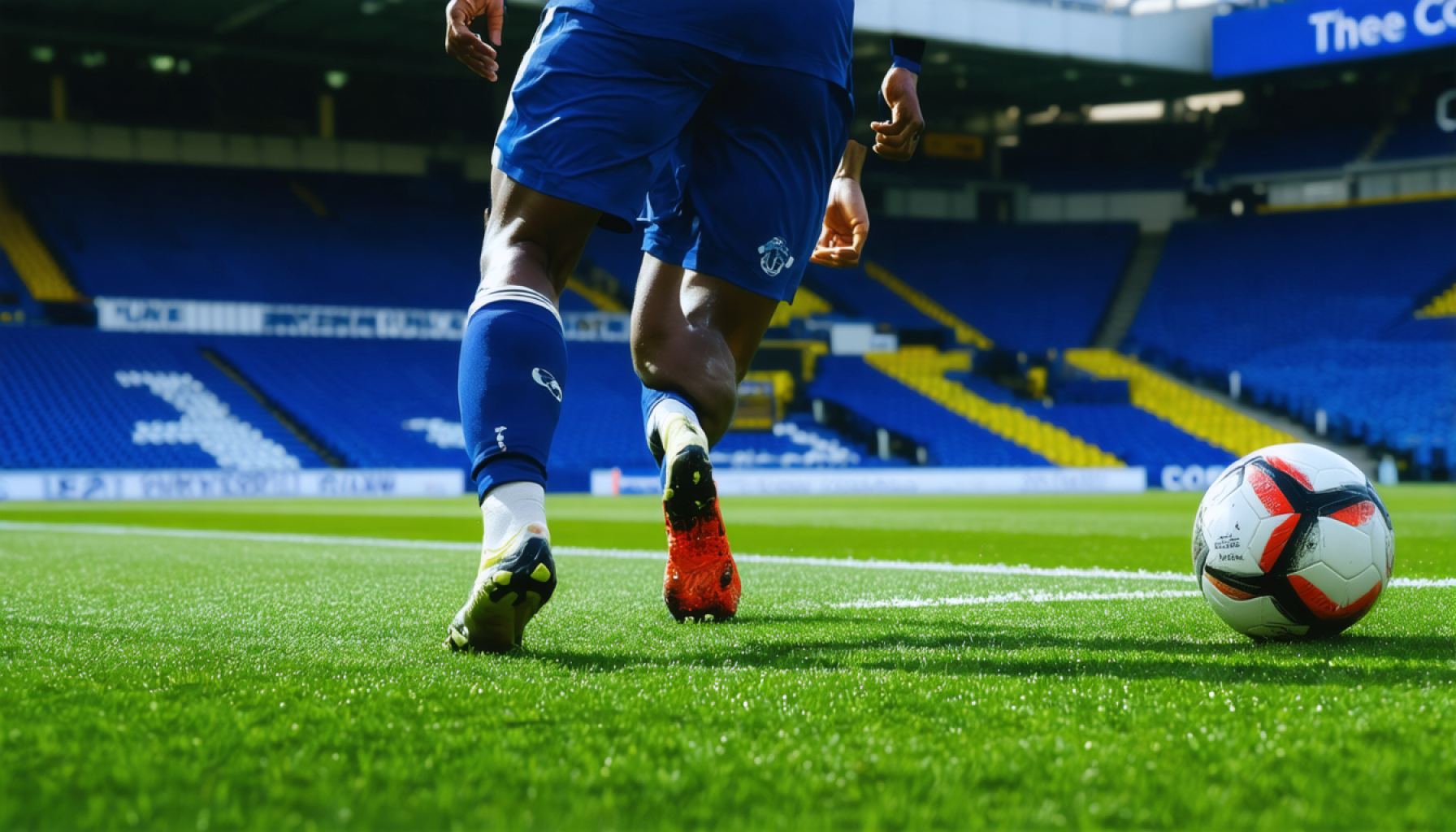- Manchester United struggled against Everton, missing the urgency and passion needed for a successful performance.
- Casemiro and Andre Onana illustrated the team’s passive demeanor, lacking the intensity for a comeback.
- Bruno Fernandes was a potential rallying figure, yet the team failed to find the necessary inspiration.
- Everton capitalized on their home advantage, bolstered by fan support, while United appeared scripted and uninspired.
- Manchester United’s future success hinges on reigniting their passion, teamwork, and the fire necessary to reclaim past glory.
A tense atmosphere hung over Goodison Park as Manchester United aimed to find their spark against a determined Everton. The players emerged without a hint of urgency, a stark contrast to the electric anticipation in the stands. Casemiro stood motionless near the center, surveying the field like a sentinel, hands firmly on hips as if weighing the invisible threads of strategy. Nearby, Andre Onana engaged in a brief exchange with Joshua Zirkzee, the interaction hardly exuding the intensity needed for a comeback tale.
The team, seemingly adrift, needed a surge of spirit, something only a rallying figure like Bruno Fernandes could provide. Yet, as the minutes ticked away, the requisite fire remained elusive. With Everton digging in their heels and drawing strength from the roar of their home crowd, Manchester United’s attempts appeared more scripted than inspired.
The team’s inertia seemed to echo through the stadium, drawing whispers from seasoned fans questioning when the sleeping giant would awaken. As the second half approached, hope lingered faintly like the last note of an unfinished symphony.
The takeaway? For a club of Manchester United’s stature, regaining their rhythm is not merely about footwork or formations; it demands rekindled passion and unity. As they left the pitch, subdued rather than triumphant, the message was clear—it’s not enough to simply show up. To reclaim their glory, United must reawaken the fire that once made them unstoppable.
Inside the Pressure Cooker: Can Manchester United Ignite Their Flame?
Real-World Use Cases
Manchester United’s performance challenge highlights common themes in team dynamics, applicable beyond sports. In business, organizations often face similar struggles with motivation and innovation. Companies can apply sports strategies to foster cohesiveness and drive, such as through team-building exercises and leadership development programs. Leveraging these methods can help underperforming teams rediscover their strengths and boost overall performance.
Reviews & Comparisons
Manchester United’s current struggles can be compared with those of other high-profile clubs who faced challenging periods, such as AC Milan in the early 2010s or Arsenal more recently. This comparison can offer insights into effective strategies for revitalization, from hiring new coaching staff to reinvigorating club culture. Observing how those teams managed their turnaround could provide a roadmap for United’s potential revival.
Controversies & Limitations
The criticism surrounding Manchester United often centers on financial decisions and leadership. Investments in marquee players sometimes prioritize star power over team needs, leading to questions about long-term strategy. Additionally, leadership changes can destabilize club continuity, highlighting the need for a balanced approach between maintaining a heritage and pushing for modern results.
Market Forecasts & Industry Trends
In broader terms, the football industry’s growth trends show increased investments in technology, such as player analytics and fan engagement platforms. Clubs embracing advanced analytics often enhance performance, indicating Manchester United might benefit from ramping up their tech utilization. Industry forecasts also suggest a continued emphasis on youth development as a core strategy for sustaining competitive edge.
Features, Specs & Pricing
Manchester United remains a top-tier club with substantial resources, enabling them to afford high-caliber players and facilities. This edge needs to be maximized through strategic planning and consistent performance. United’s team includes key players like Bruno Fernandes, known for his creative midfield capabilities, and Casemiro, whose defensive expertise offers strategic advantages if optimally harnessed.
Security & Sustainability
Sustainability in sports management involves maintaining a successful brand while ensuring financial stability. Manchester United’s operational model should emphasize sustainable spending, grassroots development, and dynamic fan engagement to remain a global powerhouse. Additionally, ensuring player welfare through comprehensive wellness programs will be central to securing long-term success.
Pros & Cons Overview
Pros:
– Historic prestige and global fan base.
– Access to significant financial and player resources.
– Potential for brand partnerships and sponsorships due to strong marketability.
Cons:
– Inconsistent on-field results affecting morale.
– High expectations leading to immense pressure.
– Critiques regarding management and strategic direction.
Actionable Recommendations
1. Strengthen Leadership: Invest in leadership training for key players like Bruno Fernandes to become more effective on-field motivators.
2. Utilize Technology: Embrace advanced analytics to refine tactics and player performance for strategic improvements.
3. Focus on Team Cohesion: Implement regular team-building initiatives to foster unity and a winning culture.
4. Sustainable Investment: Balance player acquisitions with the development of home-grown talent to secure long-term stability.
By implementing these tactics, Manchester United can tackle their current challenges with renewed vigor, paving the way for a resurgence that aligns with their storied legacy.
For more insights on football management and team dynamics, explore the resources at The Guardian.
